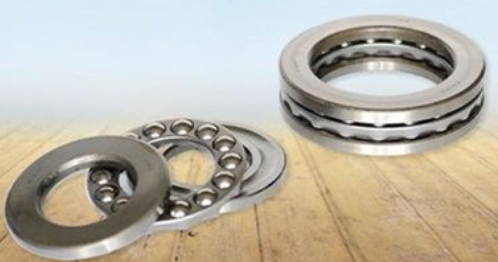Q: How to install one-way or two-way thrust ball bearings.
A: One-way or two-way thrust ball bearings are only used to bear axial loads and are suitable for working at lower speeds.
One-way thrust ball bearings can only bear loads in one direction, while two-way thrust ball bearings can bear loads in two directions. This type of bearing does not allow the shaft to be skewed to the housing support surface. Bearings with spherical washers can eliminate the influence of installation inclination.
Except for two-way bearings, one-way bearings are generally arranged in pairs and have no gaps. Most of these bearings have preloads after installation. When installing this type of bearing, the preload is generally added to such an extent that when the maximum axial load occurs, the elastic deformation of the loaded bearing does not cause the stationary ring of the other bearing to rotate without load. When the bearing is running at high speed and under the condition of thermal expansion, the bearing should have a small amount of axial clearance. The recommended values of axial clearance are shown in the table below:

Note: The inner diameters of the two rings of the one-way thrust ball bearing are different, one is the shaft ring and the other is the seat ring.
